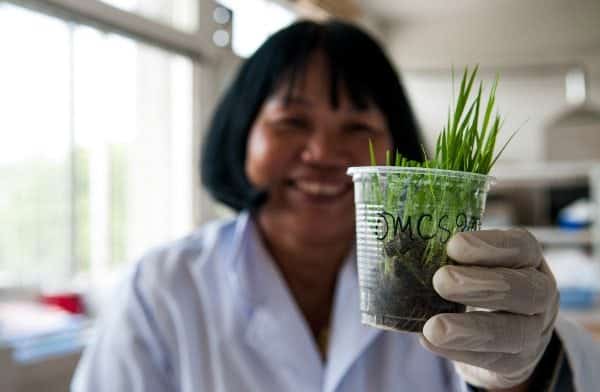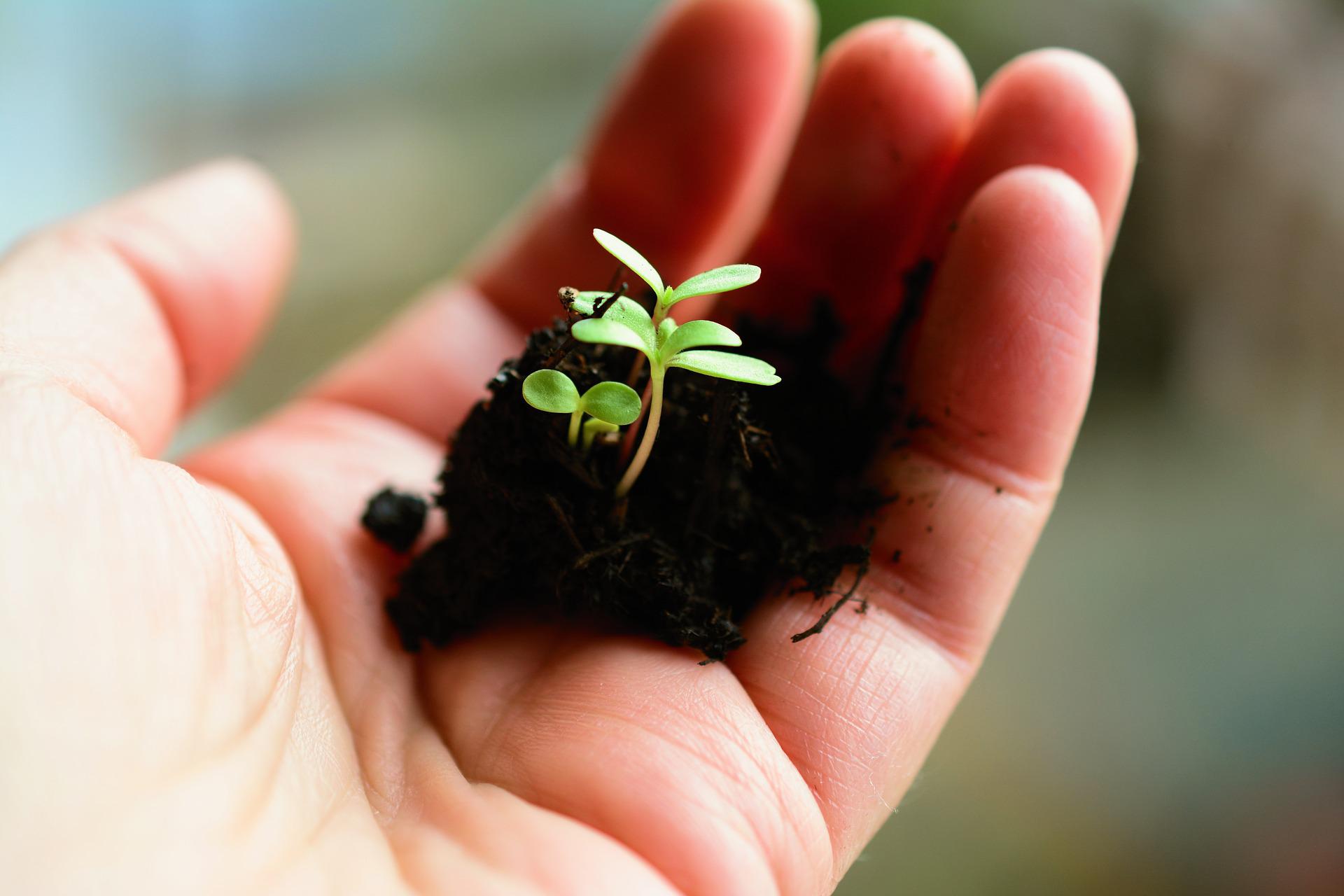The Excellence in Breeding Platform estimates that just five per cent of private sector investment in breeding research goes towards the developing world, meaning that farmers there don’t have access to modern varieties that are adapted to their need. So, the Platform seeks to create a “toolbox” of tried-and-tested approaches that smaller breeding programs in the developing world can adopt with minimal risk. This should lead to increased levels of investment in breeding, and return on investment, among the Platform’s members. The involvement of the private seed sector is crucial to achieving the goals of the Platform.
European Seed (ES): Michael, congratulations with the start of the Excellence in Breeding Platform. Can you tell a bit more about the background of this Platform, when was it started, and what is its aim?
Michael Quinn (MQ): The purpose of the Platform is to assist breeding teams that are breeding for low- and lower middle- income countries to implement best practices in their programs. To achieve this, breeding teams will require access to the latest technologies and the skills to implement these technologies, which is within the mandate of the Platform.
The Excellence in Breeding Platform, announced in October 2016, joins the Big Data and Genebank Platforms to unite research efforts within the CGIAR system of research centres and the hundreds of public and private sector partners that collaborate with them in the developing world.
ES: Why was it necessary to start this platform?

The good news is that this is a rapidly-evolving area of science, with new technologies such as cheap and fast genotyping, high-throughput phenotyping platforms and bioinformatics coming together to offer great potential. However, only large-scale breeding programs, for example the multinational private breeding sector have had the resources and ability to adopt these technologies and new approaches throughout the breeding pipeline.
Much of the future population growth and the adverse impacts of climate change will occur in areas that are not targeted by the private sector, and it is neither possible nor desirable for future increases in food production to come solely from the developed world. The Excellence in Breeding Platform is therefore necessary to enable smaller breeding programs around the world to overcome the obstacles that prevent them from full-scale modernization, and ultimately contribute to the development of vibrant and productive rural economies.
The approach of the Platform is to create a “toolbox” of tried-and-tested approaches that smaller breeding programs in the developing world can adopt with minimal risk. We will draw on available advances from the public and private sector, but also develop our own publicly-available knowledge as a collaborative effort driven by our members and users. The toolbox will also serve as a communication tool between breeders, breeding support staff and the Platform. In addition, anything that can be shared electronically will be done so through the toolbox. Finally, the Platform will achieve its goals by providing access to expert advice and training, and by brokering access to reliable and appropriate breeding services at an affordable cost.
ES: Do you have a specific set of crops or target countries that the Platform is focussing on?
MQ: As a CGIAR-wide initiative, the scope of the Platform includes trees, 21 crops, fish, and 7 types of livestock* covered by CGIAR programs. Looking at the importance of these crops in the low- and lower-middle income countries targeted by the Platform, we estimate that there may be up to 250 national programs conducting research into CGIAR mandate crops, leaving 500 scenarios where farmers of a crop are reliant on varieties from other countries or the CGIAR.
*Crops: Banana, barley, bean, cassava, chickpea, cocoa, cowpea, forage crops, lentil, maize, millet, pigeonpea, plantain, potato, rice, sorghum, soybean, sweet potato, triticale, wheat and yam. Animals: buffalo, camel, cattle, chicken, goats, pigs, sheep and fish.
ES: Which type of variety characteristics (yield, disease resistance, stress tolerance, nutritional traits, others?) do you consider of most value for the coming decades?
MQ: While there are particular regional-level trends, such as average temperature rises or new disease patterns, that threaten the food security of large numbers of people in the coming decades, at the national level, breeding challenges are particular to crops or livestock and the environments that they are grown in. We need to focus on improving the ability of breeding programs to develop and deliver varieties with the characteristics required by farmers and consumers in a rapidly-changing environment.
ES: Breeding gains of around 1% per year have been standard for many crops. However, to be able to feed the world population of close to 10 billion, we will need higher yield gains than that. What are your plans to that effect within the Platform?
MQ: At a global level, it is thought that we need to improve the yields achieved by farmers at a rate of 1.25 percent per year until 2050.
In some areas of the developed world, the yields achieved by farmers of major staples are close to the maximum can be achieved with the best varieties, and it is becoming increasingly hard to find genetic improvements, even if new technologies offer many potential solutions.
Better agronomy and access to resources are crucial to closing these gaps, but so are improved varieties. We estimate that just 5 percent of private sector investment in breeding research goes towards the developing world, meaning that farmers there don’t have access to modern varieties that are adapted to their needs. The CGIAR and national breeding programs do an amazing job of responding to these needs, but, as mentioned they often don’t have the scale to implement changes or technologies than, for example, the private sector might. The Excellence in Breeding Platform is a recognition that this challenge is also an important opportunity to deliver much higher rates of farm productivity for future generations.
[tweetshareinline tweet=”In the developing world, the gap between the potential yield and that which is actually achieved by farmers can exceed 100 percent.” username=”EuropeanSeed”]
One of the key goals of the Platform is to develop a standard means of assessing breeding program performance, measuring the rate of genetic gain achieved, not only in trials and the laboratory, but also in farmers’ fields. By ensuring that this information is created and shared transparently in developing world breeding programs, we aim to create new standards of excellence to ultimately increase yield gains in the field. We are also developing a membership agreement through which breeding programs that wish to collaborate closely with us will agree to adopt certain improvements and levels of investment, leading the way for others.
ES: According to your proposal you plan on using and developing new tools to facilitate the breeding. Have the so-called new breeding techniques such as CRISPR etc. also found a place in your program?
MQ: The criteria for tools to be shared on the Platform are: whether they are in-demand by our users, accessible freely or at an affordable cost, and whether it is feasible to adopt them in their breeding programs. It is likely that private service providers will begin to offer CRISPR applications at an affordable cost in the future; however, making effective use of new tools is a knowledge-intensive affair. Many companies exist that offer affordable genotyping services, for example, but users need support to choose the right services for their purpose and to make use of that information in practical breeding applications. This knowledge gap is one of the key obstacles to technology adoption that the Platform will address, and the same will apply to emerging high-potential technologies such as CRISPR.
ES: Among the users of the Platform you also mention the private seed sector. How could they benefit from your work on the Platform?
MQ: In addition to national agricultural research systems, the intended users of the Platform include seed and livestock companies in the developing world. Currently, because of the low returns on investment in research and development, even larger companies in areas such as sub-Saharan Africa are marketing obsolete varieties or are wholly reliant on national research systems or the CGIAR. Improving the ability of national and CGIAR research programs to deliver improved rates of genetic gain will therefore be of direct benefit to the private seed sector. Furthermore, by reducing the knowledge barrier and risks of conducting R&D, we may even see more of these companies getting involved in research as a result of Platform activities.
[tweetshareinline tweet=”Only five percent of private investment in breeding goes towards the developing world.” username=”EuropeanSeed”]
ES: Many private sector breeding companies make little to no investments in some of the smaller crops that are grown in the developing world. How could such companies be encouraged to start making such investments?
MQ: As mentioned, we estimate that only five percent of private investment in breeding goes towards the developing world. As a consequence of our goal to develop common metrics of breeding program performance, the Platform aims to improve strategies and identify areas where investment is needed. Consequently, we expect to see increased levels of investment in breeding, and return on investment, among our members. With more transparent information about breeding efforts in the developing world, together with efforts to develop a greater culture of variety turnover among seed companies and farmers, the environment should be more favourable for the international private sector to increase their levels of investment and collaboration.
ES: How can the private seed sector help with your efforts, e.g. with capacity development, or influx of high quality germplasm?
MQ: The involvement of the private seed sector is crucial to achieving the goals of the Platform.
Breeding for the developing world may be dominated by national systems and the CGIAR, but improved germplasm and advanced technologies are developed through a symbiotic and mutually-beneficial relationship between the public and private sector. The Platform seeks to draw on all available tools and knowledge created through that collaboration, increase access to private breeding services, and provide access to expert advice and training from all potential sources. There have already been successful examples of the private sector providing pro bono mentorship and consultancies to CGIAR breeding programs. The Platform seeks to facilitate more or this for its members and we have already been approached by a number of large breeding organisations wanting to be involved. We also hope to collaborate directly with private sector companies, for example in the area of pre-competitive breeding or by licensing technologies for use in markets where the private sector is not involved.
Where on the web: http://excellenceinbreeding.org/













